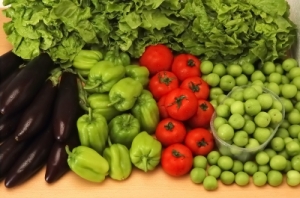My husband and I have tried making pasta a few times and it didn’t pan out. The dough was always lumpy and sticking to the machine, it usually ended with a mess. We decided it was time for a new recipe, we found one that involved resting the dough for approximately 20 minutes. This simple step made all the difference, the pasta we made was fantastic. It also made me realize that I avoid recipes with long amounts of resting time because I think it is unnecessary or I don’t have the patience . I decided that I need to kick this habit and make recipes that I have wanted to try but never did because you had to let something cool or simmer for a long time. The first thing I did was make ice cream. I love making ice cream because it is fun and one of my favorite treats, but any recipe that involved cooking the mix seemed too time consuming so I would made vanilla base’s that you added other ingredients too like: cookies, mint chip, raspberry etc. My first attempt was a salted caramel ice cream, it seems to be very popular right now. I had to make the caramel in a pan, without burning it, add cream and then let it cool. Then I made a custard base that involved heating milk and adding eggs. The last step was letting everything cool and putting it in the ice cream maker. My end result was pretty good, I think the base needed more caramel, but I was impressed. The second ice cream I made was white chocolate raspberry, which is very refreshing in the summer. In a blender I mixed white chocolate and sugar, then I added hotel milk and blended until smooth. Once that cooled I stirred in heavy whipping cream and put the mix in the ice cream maker and added raspberries at the end. I really liked the way this turned out, the subtle white chocolate and the burst of raspberries made for a very nice combination. I have been cheating myself out of delicious custards and chocolate ice cream because of my impatience, never again. I don’t have time every night to create meals and deserts that take hours but occasionally I can find time to make some exceptional creations.
The Importance of Letting Food Rest from “On food and Cooking: The Science and Lore of the Kitchen” (a great reference book for cooks)
- While pasta dough is resting the water is actually being absorbed and the “gluten network” begins, this leads to the dough being more manageable.
- Once meat is done cooking it is important to let it rest before serving because it becomes more solid making easier to cut and it retains moisture.
- When making bread it is essential to allow the dough to rest because the yeast is producing gas that leads to better flavor and texture in the bread.
- One of the benefits to cooking ice cream and allowing to cool before it putting it in the ice cream maker is that heat reacts with the proteins allowing for a creamier texture.






